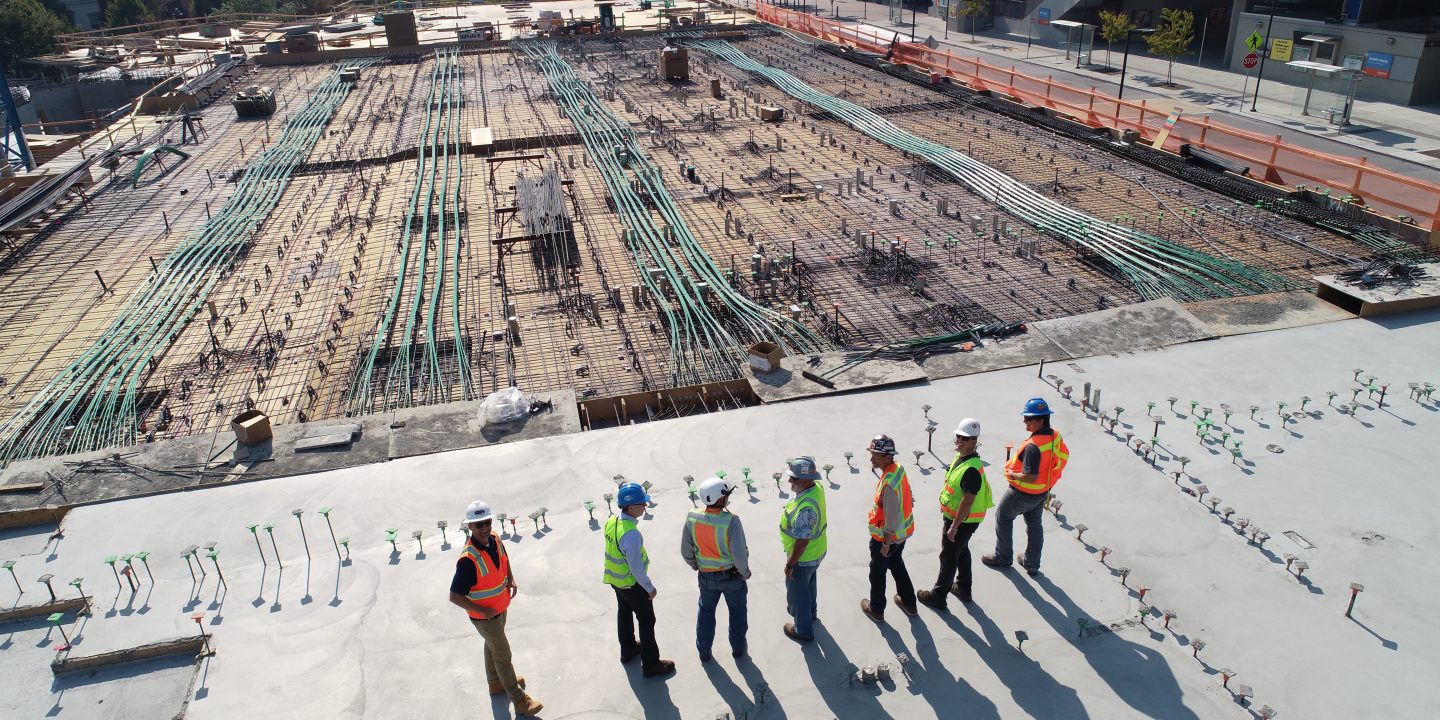
Conducting regular facility inspections is a cornerstone of effective facility management. Facility management is a critical aspect of ensuring that businesses’ operations run smoothly.
In this article, I will delve into the world of facility inspections, exploring their significance, various types, and the processes involved to keeping your facilities in top-notch condition and minimize operational disruptions.
We will also explore the vital role of facility managers in facility inspections. From preparation to collaboration with inspection teams and using technology, facility managers are instrumental in maintaining the integrity of the facilities of their organizations.
Regular inspection should be done on all facilities and equipment. During regular inspections, faults and potential failures at their early stages will be detected, corrected, fixed with minimal work and cost.
What is Facility Inspection?
Facility inspection is a critical process that plays a vital role in ensuring the safety, compliance, and efficiency of facilities in the built environment.
Facility inspection refers to the systematic examination and evaluation of a physical asset, such as a building, equipment, to assess its condition, safety, and compliance with regulations. This inspection is conducted to identify potential hazards, ensure adherence to legal requirements, and maintain the operational efficiency of the facility.

Types of Facility Inspections
Facility inspections can be categorized into different types, each serving a specific purpose. The most common types include:
Routine Inspections: Routine Inspections are scheduled and performed periodically to monitor the overall condition of all facilities. They aim to identify wear and tear, maintenance needs, and general operational issues.
Compliance Inspections: Compliance inspections are focused on ensuring that the facility adheres to all relevant regulations and standards. They are crucial to avoid legal complications and maintain a good standing with authorities.
Safety Inspections: Safety inspections prioritize the identification of safety hazards within the facility. This includes evaluating emergency exits, fire safety measures, and the general safety of employees and visitors.
Role of Facility Managers in Facility Inspections
Facility managers play crucial roles in ensuring smooth operations, safety, and compliance of facilities in our built environment .
Facility managers are responsible for overseeing the day-to-day operations of a facility. They ensure that the facility is well-maintained, efficient, and complies with all relevant regulations. One of their primary responsibilities is to manage facility inspections.
Importance of Facility Inspections
Facility inspections are of paramount importance for several reasons such as safety, compliance, and efficiency reasons.
Safety Reason: They help in identifying and rectifying safety hazards, reducing the risk of accidents and injuries within the facility.
Compliance Reason: Facility inspections ensure that a facility adheres to local, state, and federal regulations, avoiding legal issues and penalties.
Efficiency Reason: Regular inspections contribute to the smooth operation of a facility, preventing downtime due to unexpected issues.
Therefore, regular inspections help facility managers to:
- Ensure safety for occupants and visitors.
- Identify maintenance needs to prevent costly breakdowns.
- Optimize space utilization.
- Comply with legal and regulatory requirements.
- Enhance the longevity of your assets.
Benefits of Regular Facility Inspections
Regular facility inspections offer several benefits to organizations:
Preventing Hazards and Accidents: By identifying and addressing potential hazards, inspections help prevent accidents and injuries.
Maintaining Compliance: Ensuring compliance with regulations avoids legal issues and penalties.
Enhancing Efficiency: Identifying and rectifying issues promptly keeps the facility running smoothly.
A well-executed facility inspection offers several advantages which include:
- Improved safety and reduced liability.
- Cost savings through preventive maintenance.
- Increased operational efficiency.
- Compliance with industry standards.
- Better asset management.
Who Conducts Facility Inspections?
Facility inspections can be conducted by various individuals or entities, depending on the nature of the inspection. This may involve facility managers, in-house staff, maintenance personnel, external inspectors, or government agencies.
The Process of Facility Inspection
The process of facility inspection typically involves the following key steps:
- Preparing forthe Inspection
- Conducting the Inspection
- Documenting Findings
Preparing for Facility Inspection
Before the inspection, thorough planning is essential. You need to prepare for the inspection. This involves:
- Defining the scopeof the inspection.
- Setting a schedule and notifying relevant personnel.
- Assembling an inspection team, if necessary.
- Gathering the necessary tools and equipment, including safety gear.
- Notifying relevant parties about the inspection.
- Reviewing previous inspection reports.
Conducting the Inspection
During the inspection, inspectors systematically examine different areas of the facility, looking for issues, hazards, and non-compliance. The following steps can be followed:
- Start with a safety check to ensure a securebuilt
- Evaluate equipment and assets for signs of wear and tear.
- Assess the efficiency of space utilization.
- Review documentation and records.
- Take photographs to document findings.
Documenting Findings
Proper documentation is essential:
- Record findings, including photographs.
- Create a report summarizing the inspection results.
All findings, whether positive or negative, are documented. This documentation is crucial for taking corrective actions and maintaining records for future reference.
Common Facilities Inspected
Facility inspections encompass a wide range of areas, including:
Physical Structures: Assessing the integrity of the building’s structure, including walls, roofs, and foundations.
Environmental Conditions: Evaluating air quality, lighting, temperature, and overall environmental factors.
Equipment and Machinery: Ensuring that machinery and equipment are functioning correctly and safely.
Challenges in Facility Inspections
While facility inspections are crucial, they come with their own set of challenges, including resource allocation and data management.
Resource Allocation: Conducting thorough inspections requires time, manpower, and sometimes financial resources, which can be a strain on organizations.
Data Management: Handling and managing the data collected during inspections can be cumbersome without proper systems and tools in place.
Facility managers encounter various challenges in their roles when it comes to facility inspections, including resource constraints, managing data, and ensuring that all stakeholders are aligned in their approach to facility inspections.
Technology and Facility Inspections
Advancements in technology has revolutionized the way facility inspections are conducted. Facility managers often leverage digital tools, mobile apps, and sensors to streamline the inspection process, making it more efficient and accurate.
Technology can enhance the inspection process, but human inspectors are still essential for critical judgment and decision-making.
Facility Inspection Best Practices
To ensure effective facility inspections, organizations should consider the following best practices:
Checklists and Protocols: Using standardized checklists and inspection protocols ensures thorough evaluations.
Create a detailed checklist for the inspection, including items such as:
- Safety measures (fire extinguishers, emergency exits, alarms).
- Equipment and assets (machinery, HVAC systems).
- Space utilization (office layouts, storage areas).
- Documentation (safety records, maintenance logs).
You should customize the checklist to suit your specific facilities’ needs.
Staff Training: Training personnel involved in inspections ensures they are well-prepared and knowledgeable.
Assessing Safety Measures
Safety is a top priority. Ensure that:
- Emergency equipment is in working order.
- Exits are clear and well-marked.
- Safety protocols are visible and understood.
Equipment and Asset Evaluation
Evaluate the condition of equipment and assets:
- Check for any malfunctions or needed repairs.
- Confirm that maintenance schedules are up to date.
Space Utilization Analysis
Analyze how space is utilized:
- Assess office layouts for efficiency.
- Identify areas that may need reorganization.
Identifying Maintenance Needs
Identify maintenance requirements:
- Prioritize and schedule repairs.
- Allocate resources for maintenance tasks.
Compliance with Regulations
Ensure compliance with legal and regulatory standards:
- Address any violations promptly.
- Update safety protocols as needed.
Post-Inspection Actions
After the inspection:
- Share the report with relevant stakeholders.
- Address immediate safety concerns.
- Initiate scheduled maintenance.
Frequency of Facility Inspections
Regular facility inspections are key. The frequency of inspections depends on various factors, but they should be conducted regularly. The frequency will depend on factors like:
- The type of facility.
- Industry regulations.
- The age of the facility.
- Usage intensity.
Make the Inspection Process More Efficient
Utilize facility management software, if available, to streamline the inspection process. Additionally, proper planning and well-structured checklists can improve efficiency.
Conclusion
In conclusion, conducting a comprehensive facility inspection is vital for the smooth operation of your business. It helps maintain safety, optimize operations, and ensure compliance. Regular inspections will not only save you money in the long run but also keep your facilities in top shape.
Regular inspections, whether routine, compliance, or safety-focused, help organizations identify and address potential issues, prevent accidents, and ensure they adhere to regulations. Embracing technology and following best practices can further enhance the effectiveness of facility inspections.






